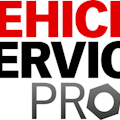Vehicle diagnostics: Where we are and where we’re headed
Editor's Note: This article was orginally published Oct. 20, 2016. Some of the information may no longer be relevant, so please use it at your discretion.
VehicleServicePros.com recently chatted with Autologic CEO Jeremy Fry about the changing landscape of vehicle diagnostics, what the future holds for diagnostic technology, and more.
VSP: In what ways have vehicle diagnostics evolved over the course of the past several years? Along those same lines, how has the technology that allows automotive technicians to do diagnostic work evolved?
Fry: When you look from the outside in, the automotive sector has got a whole heap of very highly advanced, technological elements to it. Vehicles today probably contain the most complicated computers that anybody is ever going to own, but people just don’t realize it.
While many shop owners acknowledge that there’s more engine control units (ECUs), more lines of code and things of that nature, I don’t think they’ve realized just how complicated it actually is to get the right code from a manufacturer onto the vehicle and ensure that it actually fits a purpose. I believe too many manufacturers haven’t really addressed that. They have provided devices that plug into an OBD port, they scan the vehicle, they get P-codes back, and it’s of very little value to most shop owners. They look and wonder what that fault code actually means. Is it a fault code I actually need to be aware of and take action on?
Generally fault codes can be misleading. You start chasing things through the diagnostic pathway that, when you stand back from it, you probably wouldn’t do. I think the diagnostic tools have become almost cumbersome as a foil for the technology that exists in these vehicles.
The cloud is definitely disrupting automotive diagnostics.
What it comes down to is that many of the providers out there haven’t really stood back from the industry, taken time to reflect, and acknowledge that cars are getting more complicated. There are lots of challenges for shop owners and technicians in identifying problems and fixing those problems. And, the advancement of technology is just getting faster. So unless the aftermarket and diagnostic providers react to that, I think it’s going to become increasingly more complicated for the aftermarket and the independent workshop to fix these vehicles. All that will do then is drive vehicle owners into the dealer network.
VSP: Where are vehicle diagnostics headed in the future?
Fry: I think the real challenge for this industry is that technology is incredibly disruptive. Today, we’re using physical assets, but I don’t anticipate those types of devices will be as widely available or used in the future as they are today. You look at the advancement of mobile phones, and how that technology has gone from making a simple phone call, to SMS and texting, to email, and now you have smartphones with a whole host of applications. I fundamentally believe the cloud will enable shop owners to affect diagnostic repairs through handheld devices. Now, I don’t know what the timeframe is for that. These things are not going to happen overnight.
You’ve got new vehicles coming to market more frequently, and lots of vehicle manufacturers saying they’re going to lock access to the vehicle. Because the software on these is highly complicated, they (vehicle manufacturers) want security of data, and if someone needs to access it, they are going to need to go to the vehicle manufacturers directly. That already suggests some type of Internet connection, and it will be directly connected to the vehicle manufacturer’s website and some sort of server provision, which will possibly facilitate the diagnostic event.
The handheld, be it a tablet or a smartphone, is going to start to become an anchor point between the vehicle and some type of interface and the cloud. We believe that the cloud is going to be the next big advancement. I see the mobile phone becoming more applicable to the shop. I think the cloud will also become more applicable, and diagnostics will be completed in the cloud. Also, there will be very little software that the shop owner will be using from a tablet or phone. Instead, there will be simple applets that drive an opening to a cloud-based technology that will then affect that diagnostic outcome. The real combination here is technology delivered to the cloud and to a number of devices. I think vehicle owners will want the latest updates for the latest vehicles at their fingertips, and I think the only way that will happen and be delivered is through Wi-Fi, Ethernet and the cloud.
VSP: What should shop owners and technicians be looking for in the diagnostic tools of today?
Fry: The shop owner is currently looking for the silver bullet. They are looking for that one product that does everything, and makes life easier for their technicians. Of course, there isn’t a silver bullet. There is no one solution that fixes everything or does a diagnostic assessment on every single vehicle. That’s why the cloud will become more important. People will be able to do more for less.
What customers are looking for in a diagnostic offering is simplicity. Often, I think, the industry is at fault for making things too complicated. I don’t think we’ve made it as simple as possible. Fundamentally, what the shop owner is looking for is a diagnostic solution that enables them to take on more cars, be more confident in the fixes and build their businesses. Perhaps, there isn’t a silver bullet, but with the cloud there could very possibly be a silver lining.

